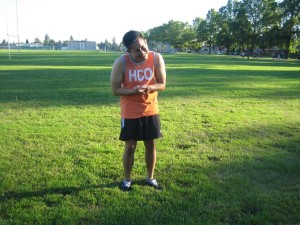Rheumatoid arthritis is considered as a serious medical condition that requires medical care. Remember that it is different from the commonly diagnosed osteoarthritis since its symptoms involve more than just the pain and aching sensation.
Rheumatoid arthritis is an autoimmune disease in which the antibodies released by the immune system targets the bone, joints and cartilage. Even today, there is no cure for this condition but there are ways to ease the symptoms. All you have to do is to register for first aid training today so that you can help relieve the discomfort caused by the symptoms.
Diagnosing rheumatoid arthritis
The doctor will generally refer those who are suspected with rheumatoid arthritis to a specialist. This will involve the assessment of the potential symptoms as well as draw out blood for laboratory testing in order to check the levels of antibodies and proteins. This will help the specialist determine a diagnosis.

Symptoms on the hands
Osteoarthritis is usually present among overweight individuals and those who lack enough exercise, but rheumatoid arthritis can attack all body types and occurs even in fit individuals.
The initial symptoms of rheumatoid arthritis in the hands include minimal stiffness and redness that occurs in the morning and subsides later in the day. Pain and excess warmth in the hand can accompany the swelling. The hands will appear slightly swollen or puffy. These symptoms can go into remission or manifest abruptly without any warning. If the condition progresses, the pain, swelling and stiffness in the hands becomes continuous and more severe. This will surely disrupt with the activities of the individual whether at home or at work.
Symptoms in the fingers
The fingers of those who suffer from long-term rheumatoid arthritis experience severe damages. The early indications of rheumatoid arthritis in the fingers include swollen, stiff and reddened knuckles. This can be felt in one or both knuckles or several fingers. Constant pain or episodes of pain can also occur in most cases. In some, there is a tingling sensation while long-term sufferers will end up with finger deformity that entails surgery either to fuse the fingers or replace the affected joints.
What is the usual mode of treatment?
The early treatment is vital in order to reduce the disabling effects of rheumatoid arthritis. This involves a combination of rest, medications and exercises. Anti-inflammatory medications such as aspirin are usually prescribed by the doctor.
In severe cases, it would require rigorous treatment. Even though corticosteroids, including cortisone and prednisone are usually prescribed in large doses, their usage is still under debate due to the potential side effects.
If the individual experiences any of the symptoms of rheumatoid arthritis on the hands and fingers, it is best to consult a doctor for proper assessment as well as starting appropriate treatment options to manage the symptoms. As long as the condition is diagnosed early, lasting damage on the joints can be prevented.
